tignon (also spelled and pronounced tiyon) is a series of headscarves or a large piece of material tied or wrapped around the head that resembles the West African gélé. It was worn by Creole and African-American women in Louisiana beginning in the Spanish colonial period, and continuing to a much lesser extent to the present day. This headgear was the result of sumptuary laws passed in 1785 under the administration of Governor Esteban Rodriguez Miró. Called the tignon laws, they prescribed appropriate public dress for female gens de couleur in colonial society (which included women like Marie Laveau At this time in Louisiana history, women of color vied with white women in beauty, dress and manners. Many of them had become the placées of white French and Spanish Creole men, and this threatened and angered their wives, mothers, sisters, daughters and fiancées. One complaint that found currency with the authorities was that white men, in pursuing flirtations or liaisons, sometimes mistook and accosted women of the elite for the light-skinned, long-haired, but mixed-race women. Alleged portrait of Marie Laveau, hangs in the Louisiana State Library in the old Cabildo in New Orleans File history Legend: (cur) = this is the current file, (del) = delete this old version, (rev) = revert to this old version. ... The term Louisiana Creole refers to people of any race or mixture thereof who are descended from settlers in colonial Louisiana before it became part of the USA in 1803 with the Louisiana Purchase, or to the culture and Creole cuisine typical of these people. ... An African American (also Afro-American or Black American, or black) is a member of an ethnic group in the United States whose ancestors, usually in predominant part, were indigenous to Africa. ... Official language(s) English and French Capital Baton Rouge Largest city New Orleans at last census; probably Baton Rouge since Hurricane Katrina Area - Total - Width - Length - % water - Latitude - Longitude Ranked 31st 134,382 km² 210 km 610 km 16 29°N to 33°N 89°W to 94°W Population... Louisiana sold in 1803 by Napoléon to USA, which was a portion of the historical extent of French Louisiana Louisiana (French language: La Louisiane) was the name of an administrative district of New France in the 17th and 18th centuries. ... Sumptuary laws (from the Latin sumtuariae leges) are laws which dictated, amongst other things, what color and type of clothing individuals were allowed to own and wear. ... This article needs to be wikified. ... Alleged portrait of Marie Laveau, which hangs in the Louisiana State Library in the Cabildo. ... Plaçage was an recognized extralegal system by which predominantly wealthy and white Creole men in Louisiana entered into the equivalent of common-law marriages with women of both African and white Creole descent known as placées (from the French word placer which means to place with). ...
A young Creole woman of color in a tignon of her own creation. Note that the rosette in the tignon is repeated as either a brooch or in the linen at her neck. Painting from the Historic New Orleans Collection, and taken from BlackCreoles.com.
As a result, Governor Miró decreed that women of color and black women, slave or free, should cover their hair and heads with a knotted headdress and refrain from "excessive attention to dress" themselves in jewels or feathers to maintain class distinctions. But the women who were targets of this decree were inventive and imaginative. They decorated tignons with their jewels or by using the finest colored materials with which to wrap their hair. In other words, "[t]hey effectively re-interpreted the law without technically breaking the law"[1]--and they continued to be pursued by men. Image File history File links Headdress. ... Image File history File links Headdress. ... Class ASCII art NFO header by a!b. ...
Black women modeling variations of the tignon during a lecture by Barbara Levigne on "The Tignon and Women of Color in Old New Orleans," at the New Orleans Main Library in July, 2005.)
The tignon can be wrapped in many ways, and part of its uniqueness is that it was and is worn in an entirely different way by every woman. Madras was a popular fabric for tignons among both free and slave populations, and has become iconic. Tignons were often created out of scraps of undyed fabric given to slaves by their masters. The fabrics, of course, were of seemingly disparate weaves, prints or patterns. Wasted or flawed material was made to unaccountably match and appear festive. The tignons worn by women of color or African women slaves in Louisiana and the Caribbean were much more distinctive, however, than those worn by American black slaves, and even had hidden messages.[2] Image File history File links Img_2585. ... Image File history File links Img_2585. ... Madras is a lightweight cotton fabric with patterned texture, used primarily for summer clothing -- pants, shorts, dresses and jackets. ...
The tignon or gélé is experiencing a resurgence in African American fashion. Celebrities such as Erykah Badu and Jill Scott have revived it, transforming the controversial headwrapping into a celebration of African-American culture. An African American (also Afro-American, Black American, or simply black), is a member of an ethnic group in the United States whose ancestors, usually in predominant part, were indigenous to Africa. ... Erykah Badu Erykah Badu (born Erica Abi Wright on February 26, 1971 in Dallas, Texas) is an American R&B/hip hop artist whose work crosses over into jazz. ... Jill Scott Jill Scott (born April 4, 1972) is a jazz and rhythm and blues and neo-soul singer. ... An African American (also Afro-American or Black American, or black) is a member of an ethnic group in the United States whose ancestors, usually in predominant part, were indigenous to Africa. ...
Sunday, November 23, 2008
Subscribe to:
Post Comments (Atom)
















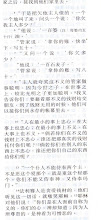














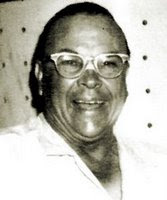









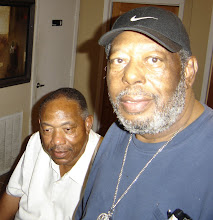













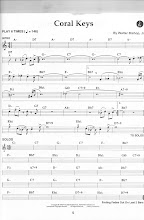

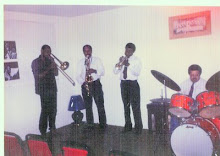






No comments:
Post a Comment